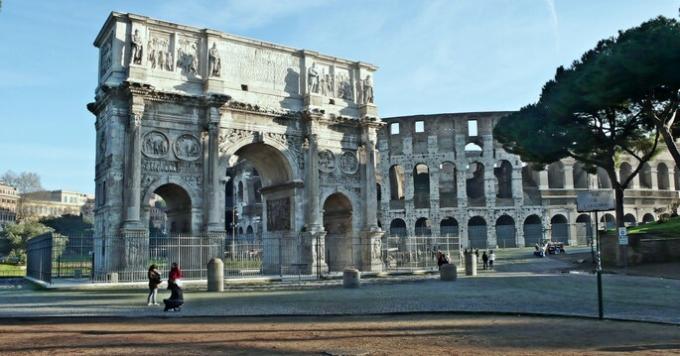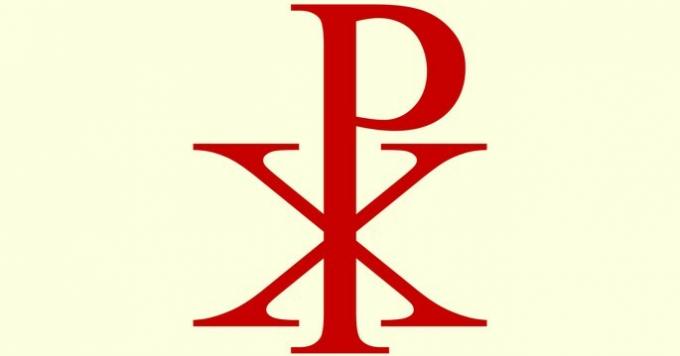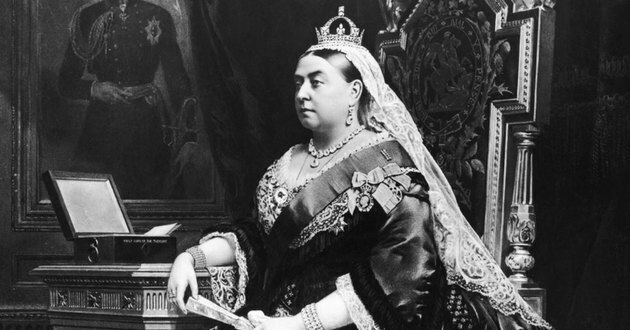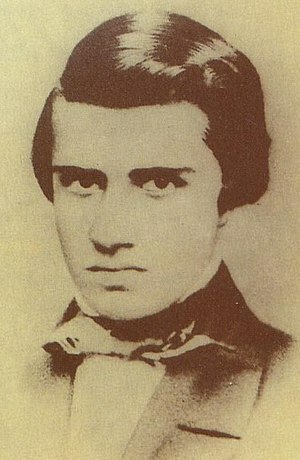Flavio Valerius Aurélio Constantino (272 d. Ç. - 337 d. C.), called "Constantine the Great", was the second Roman emperor of the Constantine dynasty.
He was the first emperor to give Christianity freedom in the Roman Empire. He also stood out for the series of administrative, military and religious reforms carried out during his reign.
How did Constantine become emperor?
Constantine's father, Emperor Constantius I, died in 306 AD. Ç. in Eboracum (present-day York, England).
His troops decided to declare his son emperor. However, as the regime at the time was the tetrarchy, Constantine shared the title of Augustus (the highest in the hierarchy) with the ruling emperors Magentius (son of Maximian), Licinius, and Maximino. Constantine's Magentius divided the government of the Western Roman Empire.
In October 312 d. C., Constantino I advanced for a confrontation with Magêncio, because it tried to dominate in an exclusive way the Roman Empire of the West. He advanced through northern Italy, passing through places that today correspond to the cities of Turin and Milan.
Knowing that Constantine I was approaching, Magêncio decided to surprise him with his troops on the Milvia Bridge, which still exists. in the present day over the Tiber River, as he knew that intercepting it at this location would be crucial to prevent it from entering into Pomegranate.
Despite having a troop with a total number of men inferior to those of Magentius, on October 28, 312 d. a., Constantino defeated his opponent who, during the battle, fell in the river and drowned. Thus, he came to reign alone as emperor of the Roman Empire in the West.

Sole Emperor of the Roman Empire
Constantine's disputes to defend his position included a series of events such as diplomatic negotiations and civil wars.
By defeating Magentius, Constantine led the Western Roman Empire alone. However, the Eastern Roman Empire still had Maximinus and Licinius as emperors.
In a negotiation between these two territories it was established, by the Edict of Milan, that the Roman Empire would be neutral in what Concerning religions, Constantine offers his sister in marriage to Licínio, which culminated in a greater proximity between the two.
This rapprochement created tensions that resulted in the severing of relations between Maximinus and Licinius in 313, who faced each other at the Battle of Tzíralo, on April 30, 313. Licínio came out as the winner and, months later, Maximino died. Thus, Licinius came to reign alone in the Eastern Roman Empire.
By this time Licinius was the emperor of the eastern part of the Roman Empire, and Constantine was the emperor of the western part. However, the two began to face each other directly in the struggle for power.
In July 324 d. a., took place Batalla de Hellesponto (present Darnadelos), a naval combat from which the troops of Constantino, led by its Crispo son, came out victorious.
Afterwards, the final confrontation took place in September 324 d. a., in Batalla de Crisópolis. After a crushing defeat, where he lost a large part of his army, Licinius managed to escape.
Realizing that the remaining soldiers would not be enough for a new confrontation, Licinius surrendered to the enemy, intermediated by his wife.
Constantino pledged to comply with his sister's request to spare her husband Licinio's life, but ended up killing him after a few months. With that, the Tetrarchy came to an end and Constantine became the only emperor of the entire Roman Empire (west and east).

See too: Roman Emperors
Origin of Constantinople
The city of Constantinople was established in the city of Byzantium in 330 AD. Ç. It is currently known as Istanbul, Turkey.
Aware that Rome was somewhat removed from the eastern borders of the Roman Empire, and that it was the scene of clashes, Constantine decided to change the capital of the Empire and chose the location because of its location strategic.
Named Constantinople in his own honor, Constantine also called the city "New Rome." Governed by Roman legislation and marked by the presence of Christianity, the official language was Greek.
Constantine and Christianity
For a long time, Christianity was interpreted by the Roman Empire as an affront, because instead of worshiping the Emperor, its adherents worshiped God.
During this period, Christians were persecuted and many of their properties and places of worship were confiscated. It was common, for example, to throw Christians to the lions in the Coliseum in Rome to entertain the crowds.
Constantine played a fundamental role in favor of Christianity when, with Licinius, he signed in 313 d. Ç. the Edict of Milan, decreeing an end to religious persecution and officially guaranteeing the legitimacy not only of Christianity but of all other religions as well.
Although he is considered to be the first Roman Emperor to convert to Christianity, some historians defend the idea that Constantine was actually a pagan.
In this sense, his position in favor of the Christian religion was nothing more than a political interest, as the support given to the Christian Church was a way to keep the peace in the Roman Empire.
Proof of this is the fact that he has never attended masses or other religious acts, and that he only has asked to be baptized and christened at the end of his life, when he already knew that death would loomed.
O Christianity it only became the official religion of the Roman Empire in 380 AD. C., through the Edict of Thessalonica, by order of Emperor Theodosius I.
Constantine's Cross
The day before the confrontation with Magentius, which would come to be known as the Battle of the Milvian Bridge, Constantine had a vision as he watched to the sun: he saw the letters X and P intertwined with a cross, with the Latin saying "In Hoc Signo Vinces", which means "With this sign, you will win”.
So, he ordered all his soldiers to paint a cross on their shields and ended up winning the confrontation. A second theory holds that it was not a vision but a dream.

The Roman Empire under Constantine
During Constantine's reign, the Roman Empire underwent a series of religious, administrative and military reforms. Check out the main ones below.
religious reforms
- He legalized Christianity and other religions through the Edict of Milan.
- It unified the Christian church in order to end doctrinal differences.
- He summoned, in 325 d. C., the Council of Nicaea, which validated the divine nature of Jesus through a vote.
administrative reforms
- He founded a new capital for the Roman Empire: Constantinople, also called New Rome.
- It established that the position of senator ceased to be a public office and became a hierarchical administrative position.
- It allowed senators freedom to elect who would join the Senate.
military reforms
- He abolished the Praetorian Guard, responsible for protecting the central part of the camp, where army officers were kept.
- He created the palatine schools, which became the core of the Roman military system.
- He placed virtually all mobile military forces at his immediate disposal.
Curiosities about Constantine
- He decreed Sunday as a day of rest.
- He defined the way to calculate the date of Easter.
- He fixed December 25th as Christmas Day.
Was he interested in learning more about the Roman Empire? Be sure to check the contents below:
- Roman Empire
- Byzantine Empire
- Fall of Constantinople
- fall of the roman empire



